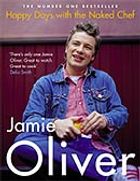- Healthy recipes
- Healthy snacks
- Healthy lunches
- Healthy chicken recipes
- Healthy fish recipes
- Healthy vegetarian recipes
- Main Ingredient
- Chicken
- Pasta
- Vegetables
- Fish
- Beef
- Eggs
- View more…
- Special Diets
- Vegan
- Vegetarian ideas
- Gluten-free
- Dairy-free
- Budget recipes
- One-pan recipes
- Meals for one
- Breakfast
- Desserts
- Quick fixes
- View more…
- Baking recipes
- Cakes
- Biscuit recipes
- Gluten-free bakes
- View more…
- Family recipes
- Money saving recipes
- Cooking with kids
- School night suppers
- Batch cooking
- View more…
- Special occasions
- Dinner party recipes
- Sunday roast recipes
- Dinner recipes for two
- View more…
- 5 Ingredients Mediterranean
- ONE
- Jamie’s Keep Cooking Family Favourites
- 7 Ways
- Veg
- View more…
- Nutrition
- Features
- Cheap eats
- Healthy meals
- Air-fryer recipes
- Family cooking
- Quick fixes
- View more
- How to’s
- How to cook with frozen veg
- How to make the most of your oven
- How to make meals veggie or vegan
- View more
- More Jamie Oliver
- YesChef x Jamie Oliver
- Cookbook Club
- Jamie Oliver Group website
- Jamie Oliver Cookery School
- Ministry of Food
- Vegepedia
Basic bread recipe
A foolproof loaf
- Dairy-freedf
- Veganvg
- Vegetarianv
A foolproof loaf
- Dairy-freedf
- Veganvg
- Vegetarianv
“You can't beat freshly baked bread – crack this super simple bread recipe and conquer any loaf! ”
Makes 1 loaf
Cooks In55 minutes plus proving and cooling time
DifficultyNot too tricky
BreadBritishBaking
Nutrition per serving
-
Calories 127 6%
-
Fat 0.5g 1%
-
Saturates 0.1g 1%
-
Sugars 1.6g 2%
-
Salt 0.4g 7%
-
Protein 4.4g 9%
-
Carbs 28g 11%
-
Fibre 1.1g -
Of an adult's reference intake
Tap For Method
Ingredients
- 1 kg strong bread flour
- 625 ml tepid water
- X3 7 g sachets of dried yeast , or 30g fresh yeast
- 2 tablespoons sugar
- 1 level tablespoon fine sea salt
- flour , for dusting
Tap For Method
The cost per serving below is generated by Whisk.com and is based on costs in individual supermarkets. For more information about how we calculate costs per serving read our FAQS
Tap For Ingredients
Method
- Stage 1: making a well
Pile the flour on to a clean surface and make a large well in the centre. Pour half your water into the well, then add your yeast, sugar and salt and stir with a fork. - Stage 2: getting it together
Slowly, but confidently, bring in the flour from the inside of the well. (You don't want to break the walls of the well, or the water will go everywhere.) Continue to bring the flour in to the centre until you get a stodgy, porridgey consistency – then add the remaining water. Continue to mix until it's stodgy again, then you can be more aggressive, bringing in all the flour, making the mix less sticky. Flour your hands and pat and push the dough together with all the remaining flour. (Certain flours need a little more or less water, so feel free to adjust.) - Stage 3: kneading!
This is where you get stuck in. With a bit of elbow grease, simply push, fold, slap and roll the dough around, over and over, for 4 or 5 minutes until you have a silky and elastic dough. - Stage 4: first prove
Flour the top of your dough. Put it in a bowl, cover with cling film, and allow it to prove for about half an hour until doubled in size – ideally in a warm, moist, draught-free place. This will improve the flavour and texture of your dough and it's always exciting to know that the old yeast has kicked into action. - Stage 5: second prove, flavouring and shaping
Once the dough has doubled in size, knock the air out for 30 seconds by bashing it and squashing it. You can now shape it or flavour it as required – folded, filled, tray-baked, whatever – and leave it to prove for a second time for 30 minutes to an hour until it has doubled in size once more. This is the most important part, as the second prove will give it the air that finally ends up being cooked into your bread, giving you the really light, soft texture that we all love in fresh bread. So remember – don't fiddle with it, just let it do its thing. - Stage 6: cooking your bread
Preheat the oven to 180°C/350°F/gas 4. Very gently place your bread dough on to a flour-dusted baking tray and into the preheated oven. Don't slam the door or you'll lose the air that you need. Bake for 25-30 minutes or until cooked and golden brown. You can tell if it's cooked by tapping its bottom – if it sounds hollow it's done, if it doesn't then pop it back in for a little longer. Once cooked, place on a rack and allow it to cool for at least 30 minutes – fandabidozi. Feel free to freeze any leftover bread.
Related features
7 sensational sandwich recipes
7 twists on avocado on toast
Bread baking for beginners
Related video
The best bread in Puglia: Jamie Oliver
© 2024 Jamie Oliver Enterprises Limited
- Terms of Use
- Privacy Policy
- Cookies
- Jamie Oliver Group
- Contact
- Sitemap
© 2024 Jamie Oliver Enterprises Limited

